September 12 stands as one of history’s most eventful days, witnessing the rise and fall of empires, groundbreaking discoveries, and moments that shaped our modern world across centuries of human achievement.

Politics and Government Events on September 12
1923 – Southern Rhodesia Annexed by United Kingdom
The British Empire expanded its African colonial holdings by formally annexing Southern Rhodesia, the territory known today as Zimbabwe. This political transformation established direct British control over the region’s governance and resources.
Colonial administrators implemented new systems of law and administration throughout the territory. The annexation marked a crucial step in the complex colonial history that would eventually lead to Zimbabwe’s independence decades later.
1938 – Hitler Demands Sudetenland Autonomy
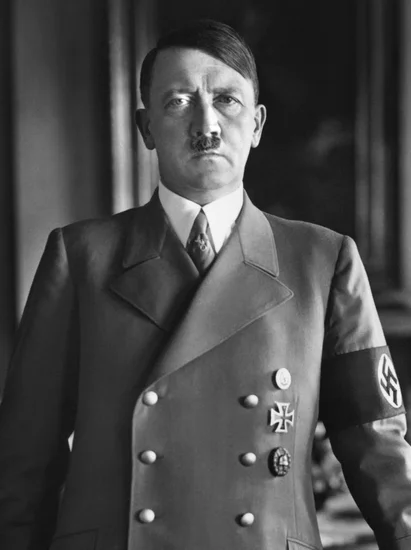
Adolf Hitler escalated tensions across Europe by demanding complete autonomy and self-determination for ethnic Germans living in Czechoslovakia’s Sudetenland region. His aggressive diplomatic stance pushed the continent closer to inevitable military conflict.
The demand represented a critical moment in the lead-up to World War II. European leaders struggled to respond to Hitler’s increasingly bold territorial ambitions while attempting to maintain peace through diplomatic channels.
1974 – Emperor Haile Selassie Deposed in Ethiopia

The Derg military junta overthrew Emperor Haile Selassie of Ethiopia, ending his remarkable 58-year reign over the ancient African kingdom. The coup marked the dramatic conclusion of one of the world’s longest-running monarchies.
Selassie’s fall shocked the international community and devastated Rastafarian followers worldwide who revered him as a divine figure. The military takeover ushered in a new era of political upheaval and social transformation across Ethiopia.
1980 – Turkish Military Coup Overthrows Government
General Kenan Evren led a successful military coup that toppled Turkey’s 43rd civilian government, citing political instability and economic crisis as justification. The military takeover suspended democratic institutions and imposed martial law across the nation.
The coup represented a significant setback for Turkish democracy and civil liberties. Military leaders promised to restore order and implement reforms, but their actions sparked international condemnation and domestic resistance.
1990 – German Reunification Treaty Signed
The two German states joined with the Four Powers to sign the Treaty on the Final Settlement with Respect to Germany in Moscow. This historic agreement cleared the legal pathway for German reunification after decades of Cold War division.
The treaty negotiations resolved complex issues surrounding sovereignty, borders, and military arrangements. International diplomats worked tirelessly to ensure the peaceful integration of East and West Germany into a unified nation.
2007 – Former Philippine President Estrada Convicted
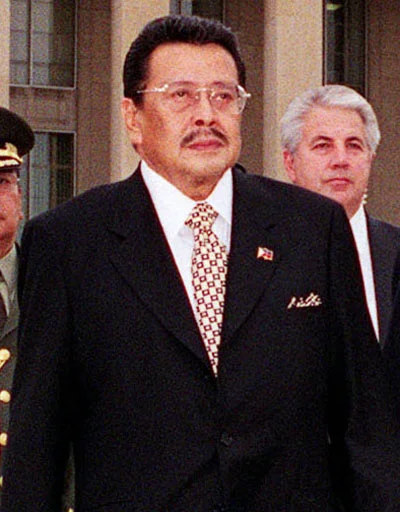
Former Philippine President Joseph Estrada received a conviction for plunder in a landmark corruption case that captivated the nation. The guilty verdict marked the first time a former Filipino president faced criminal conviction for official misconduct.
The trial’s conclusion represented a significant victory for anti-corruption efforts in the Philippines. Estrada’s conviction sent a powerful message about accountability and the rule of law in Philippine politics.
Military and Naval History on September 12
1942 – Battle of Edson’s Ridge Begins
U.S. Marines defending Henderson Field on Guadalcanal faced their first major assault from Imperial Japanese Army troops in what became known as the Battle of Edson’s Ridge. The fierce fighting would prove crucial to American control of the strategic airfield.
The battle tested Marine resolve and tactical preparation under intense combat conditions. American forces successfully repelled the Japanese assault, maintaining their vital foothold in the Solomon Islands campaign.
1942 – RMS Laconia Torpedoed and Sunk
A German U-boat torpedoed the RMS Laconia off the West African coast, sending the passenger liner to the bottom with civilians, Allied soldiers, and Italian prisoners of war aboard. The sinking resulted in heavy casualties and international controversy.
The tragedy highlighted the brutal realities of unrestricted submarine warfare during World War II. The incident sparked debates about maritime law and the protection of civilian vessels in wartime.
1943 – Mussolini Rescued by German Commandos

German commando forces led by Otto Skorzeny executed a daring rescue operation that freed Benito Mussolini from house arrest in the Italian mountains. The dramatic mission restored the deposed dictator to German-controlled territory.
The rescue operation demonstrated German special forces capabilities and Hitler’s determination to maintain Axis solidarity. Mussolini’s liberation allowed Germany to establish a puppet Italian government in northern territories.
1944 – Yugoslav Liberation Campaign Continues
Yugoslav partisan forces liberated Bajina Bašta and other Serbian cities from Axis occupation forces, advancing their campaign to free the entire country. The victories demonstrated growing partisan strength and coordination against occupying armies.
The liberation of western Serbian towns marked significant progress in the broader Yugoslav resistance movement. Local populations welcomed partisan forces as liberators after years of harsh occupation rule.
Science and Discovery Milestones on September 12
1933 – Nuclear Chain Reaction Conceived
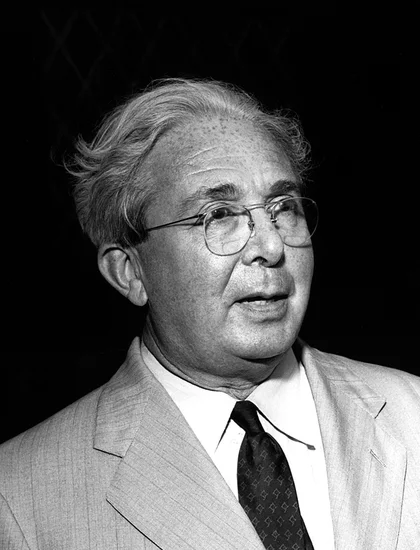
Hungarian physicist Leó Szilárd conceived the revolutionary idea of nuclear chain reaction while waiting for a traffic light on Southampton Row in London’s Bloomsbury district. His breakthrough insight would fundamentally transform physics and human civilization.
The moment of inspiration occurred during a simple street crossing, yet its implications would reshape warfare, energy production, and international relations. Szilárd’s theoretical work laid the foundation for both nuclear weapons and peaceful atomic energy applications.
1940 – Lascaux Cave Paintings Discovered
French explorers discovered the magnificent Paleolithic cave paintings at Lascaux, revealing extraordinary artistic achievements from humanity’s prehistoric past. The cave’s elaborate animal depictions revolutionized understanding of early human creativity and cultural development.
The discovery provided unprecedented insights into Stone Age artistic capabilities and spiritual practices. Archaeologists recognized the paintings as masterworks that demonstrated sophisticated artistic techniques dating back thousands of years.
1958 – First Integrated Circuit Demonstrated
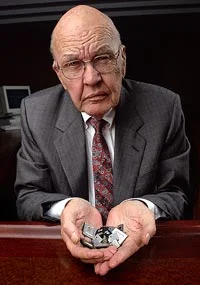
Jack Kilby successfully demonstrated the first working integrated circuit while employed at Texas Instruments, launching the modern electronics revolution. His groundbreaking invention miniaturized complex electronic components onto a single semiconductor chip.
The demonstration marked the beginning of the computer age and digital technology explosion. Kilby’s integrated circuit would eventually enable everything from personal computers to smartphones and countless other electronic devices.
1959 – Soviet Luna II Launched Toward Moon
The Soviet Union launched Luna II, a large rocket aimed directly at the Moon, marking another milestone in the escalating Space Race. The mission demonstrated Soviet capabilities in long-range space exploration and lunar trajectory calculations.
The launch represented significant technological advancement in rocket propulsion and space navigation. Soviet engineers achieved precise targeting that would soon result in the first human-made object reaching the lunar surface.
2013 – Voyager 1 Enters Interstellar Space
NASA confirmed that Voyager 1 had become the first human-made object to enter interstellar space, crossing the boundary of our solar system after 36 years of travel. The historic achievement marked humanity’s first direct exploration beyond the solar system’s influence.
The spacecraft’s journey into interstellar space provided unprecedented scientific data about the universe beyond our solar system. Voyager 1’s instruments continued transmitting valuable information about cosmic conditions in previously unexplored regions.
Cultural and Arts Events on September 12
1910 – Mahler’s Symphony No. 8 Premieres
Gustav Mahler’s monumental Symphony No. 8 premiered in Munich with an unprecedented ensemble of 852 singers and 171 orchestra musicians. The massive performance showcased the composer’s ambitious vision for symphonic music on an extraordinary scale.
Bruno Walter assisted Mahler in conducting rehearsals for this “Symphony of a Thousand,” which pushed the boundaries of orchestral composition. The premiere established new standards for large-scale musical performances and symphonic ambition.
1959 – Bonanza Television Series Debuts
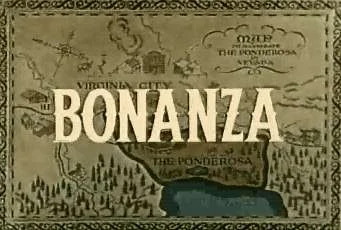
The Western television series Bonanza premiered as the first regularly scheduled color television program in the United States. The show’s innovative use of color broadcasting technology helped accelerate the transition from black-and-white to color television.
The series transformed television entertainment by demonstrating color broadcasting’s commercial viability and audience appeal. Bonanza’s success encouraged other networks to invest in color programming and production capabilities.
1962 – Kennedy’s Moon Speech at Rice University
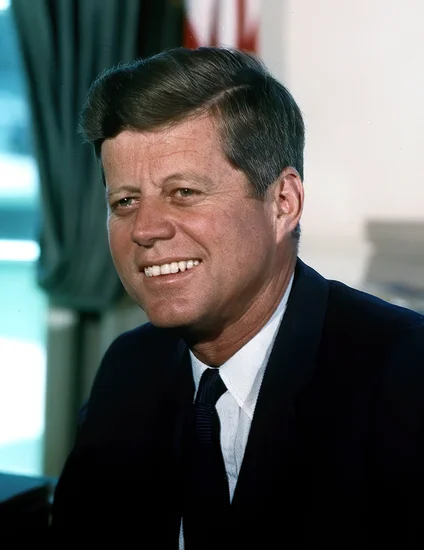
President John F. Kennedy delivered his famous “We choose to go to the Moon” speech at Rice University, galvanizing American support for the Apollo space program. The inspiring address articulated the nation’s commitment to lunar exploration and technological leadership.
Kennedy’s speech transformed the Moon landing from a distant possibility into a national priority and moral imperative. The president’s words energized public support for the massive financial and technological investments required for space exploration.
Religious and Social Events on September 12
1915 – Armenian Genocide Survivors Rescued

French soldiers rescued over 4,000 Armenian genocide survivors who had been stranded on Musa Dagh mountain during the Ottoman Empire’s systematic persecution campaign. The dramatic rescue operation saved lives and brought international attention to the ongoing genocide.
The rescue provided crucial evidence of the Ottoman government’s systematic extermination policies against Armenian populations. International observers documented the survivors’ testimonies, creating historical records of the genocide’s scope and brutality.
1953 – Kennedy-Bouvier Wedding

U.S. Senator John Fitzgerald Kennedy married Jacqueline Lee Bouvier at St. Mary’s Church in Newport, Rhode Island, in a ceremony that captivated American society. The wedding united two prominent families and created one of America’s most famous political partnerships.
The elegant ceremony attracted significant media attention and established the couple as glamorous figures in American politics. Their marriage would later transform the White House into a center of cultural sophistication and international style.
1977 – Steve Biko Dies in Police Custody

South African anti-apartheid activist Steve Biko died while in police custody, sparking international outrage and condemnation of the apartheid regime’s brutal suppression tactics. His death became a rallying point for the global anti-apartheid movement.
Biko’s death exposed the violent reality of South African police methods and government oppression. The tragedy galvanized international opposition to apartheid and strengthened calls for economic sanctions against the white minority government.
Business and Economic Events on September 12
1983 – Wells Fargo Depot Robbery
Los Macheteros militants executed a sophisticated robbery of a Wells Fargo depot in West Hartford, Connecticut, stealing approximately $7 million in cash. The heist represented one of the largest cash thefts in American history at the time.
The robbery demonstrated the group’s elaborate planning and execution capabilities while highlighting security vulnerabilities in armored car operations. Federal investigators launched an intensive manhunt to recover the stolen funds and capture the perpetrators.
2001 – Ansett Australia Collapses
Ansett Australia, the country’s pioneering interstate airline, collapsed due to financial pressures exacerbated by the global aviation industry crisis. The bankruptcy left 10,000 employees without jobs and disrupted domestic air travel across the continent.
The airline’s failure marked the end of an era in Australian aviation history and demonstrated the industry’s vulnerability to economic shocks. Passengers and employees struggled with the sudden disruption to established travel patterns and employment security.
Transportation and Infrastructure on September 12
1906 – Newport Transporter Bridge Opens

Viscount Tredegar officially opened the Newport Transporter Bridge in Wales, providing a vital transportation link across the River Usk. The innovative bridge design allowed ships to pass underneath while maintaining vehicle and pedestrian traffic flow.
The bridge’s unique engineering solution addressed the challenge of crossing a busy shipping channel without disrupting maritime commerce. The structure became an iconic landmark and demonstrated advanced engineering capabilities in early 20th-century Britain.
2008 – Chatsworth Train Collision

A devastating collision between a Metrolink commuter train and a Union Pacific freight train in Los Angeles killed 25 people and injured many others. The tragic accident highlighted critical safety deficiencies in American passenger rail operations.
The crash investigation revealed human error and inadequate safety systems as contributing factors to the tragedy. The disaster prompted comprehensive reviews of railway safety protocols and communication systems across the national rail network.
2012 – Petropavlovsk-Kamchatsky Air Crash

Petropavlovsk-Kamchatsky Air Flight 251 crashed during its approach to Palana Airport in Russia, killing 10 passengers and crew members while injuring four survivors. The accident occurred in challenging weather conditions in the remote Kamchatka Peninsula.
The crash highlighted the dangers faced by regional aviation in Russia’s harsh geographical and climatic conditions. Investigators examined weather factors, aircraft maintenance, and pilot training as potential contributing elements to the tragedy.
Sports and Recreation on September 12
1984 – Dwight Gooden Sets Strikeout Record

New York Mets pitcher Dwight Gooden established a new Major League Baseball record for strikeouts by a rookie, achieving 276 strikeouts in his debut season. The 19-year-old phenomenon surpassed Herb Score’s previous record of 246 strikeouts set in 1954.
Gooden’s remarkable achievement demonstrated exceptional pitching talent and established him as one of baseball’s most promising young stars. His 276 strikeouts in just 218 innings pitched showcased both power and efficiency on the mound.
1966 – Gemini 11 Mission Launches
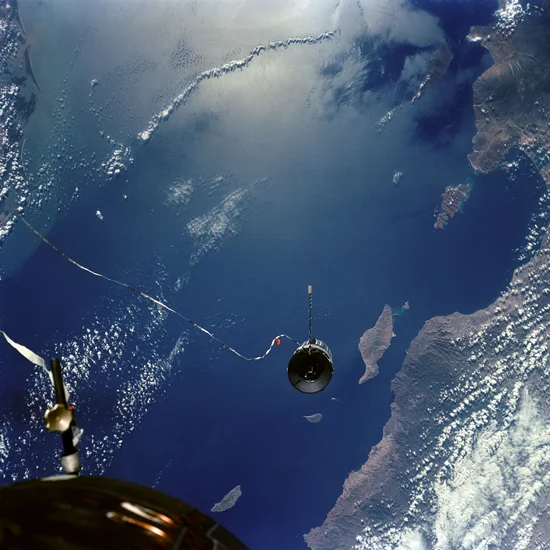
NASA launched Gemini 11, the penultimate mission in the Gemini program, which achieved the highest altitude reached by humans except for the Apollo lunar missions. The mission demonstrated advanced orbital maneuvering and rendezvous capabilities.
The astronauts successfully completed complex orbital operations and achieved record-breaking altitude during their spaceflight. Gemini 11’s accomplishments provided crucial experience and confidence for the upcoming Apollo lunar missions.
1969 – Philippine Air Lines Crash

Philippine Air Lines Flight 158 crashed near Manila International Airport in Antipolo, killing 45 people in one of the Philippines’ deadliest aviation disasters. The tragedy highlighted safety concerns in Southeast Asian commercial aviation during the rapid expansion of air travel.
The crash investigation examined weather conditions, aircraft maintenance, and pilot procedures as potential factors in the accident. The disaster prompted reviews of aviation safety standards and emergency response procedures in the Philippines.
Notable Births on September 12
1913 – Jesse Owens Born

Jesse Owens entered the world in Oakville, Alabama, beginning a life that would challenge racial barriers through athletic excellence. His childhood in the segregated South shaped his determination to succeed despite overwhelming social obstacles.
Owens would later demolish Hitler’s Aryan supremacy myths at the 1936 Berlin Olympics by winning four gold medals. His athletic achievements transcended sports to become powerful symbols of human dignity and racial equality.
1921 – Stanisław Lem Born
Polish philosopher and science fiction author Stanisław Lem was born in Lwów, beginning a literary career that would explore the boundaries between science and imagination. His early experiences during World War II profoundly influenced his later philosophical writings.
Lem would become one of the most widely read science fiction authors worldwide, with works like “Solaris” examining humanity’s relationship with the unknown. His writings combined rigorous scientific thinking with profound philosophical insights about consciousness and reality.
1944 – Barry White Born

Barry White was born in Galveston, Texas, bringing into the world a future master of soul and disco music. His distinctive deep voice and lush orchestral arrangements would define romantic music for generations.
White’s innovative production techniques and sensual vocal style revolutionized popular music in the 1970s. His recordings combined sophisticated orchestration with passionate vocal delivery, creating a unique sound that influenced countless artists.
1957 – Hans Zimmer Born

German composer Hans Zimmer was born in Frankfurt, beginning a musical journey that would revolutionize film scoring. His early interest in synthesizers and electronic music shaped his innovative approach to cinematic composition.
Zimmer would later compose iconic scores for films like “The Lion King,” “Gladiator,” and “Inception,” earning multiple Academy Awards. His fusion of orchestral and electronic elements created new possibilities for emotional storytelling through music.
1980 – Yao Ming Born

Chinese basketball player Yao Ming was born in Shanghai, destined to become a bridge between Eastern and Western basketball cultures. His extraordinary height and athletic ability made him a standout player from an early age.
Yao would later star in the NBA for the Houston Rockets, becoming the first Chinese player to achieve superstar status in American professional basketball. His career opened doors for international players and expanded basketball’s global reach.
Notable Deaths on September 12
1977 – Steve Biko Dies

South African anti-apartheid activist Steve Biko died in police custody at age 30, becoming a martyr for the freedom movement. His death while detained by security forces exposed the brutal reality of apartheid oppression to the world.
Biko’s philosophy of Black Consciousness had inspired a generation of South African activists to fight for dignity and equality. His death galvanized international opposition to apartheid and strengthened calls for economic sanctions against the white minority government.
2003 – Johnny Cash Dies

Legendary American country music singer Johnny Cash died at age 71, ending a career that spanned over four decades. His distinctive voice and rebellious spirit had made him an icon of American music and culture.
Cash’s music transcended genre boundaries, incorporating elements of country, rock, gospel, and folk into his unique sound. His later collaborations with producer Rick Rubin introduced his music to new generations and cemented his legacy as a musical innovator.
2009 – Norman Borlaug Dies

Agricultural scientist Norman Borlaug died at age 95, concluding a life dedicated to fighting world hunger through agricultural innovation. His development of high-yield crop varieties had saved millions of lives during the Green Revolution.
Borlaug’s work earned him the Nobel Peace Prize and recognition as the father of the Green Revolution. His agricultural techniques increased food production worldwide, demonstrating how scientific innovation could address global humanitarian challenges.
2010 – Claude Chabrol Dies
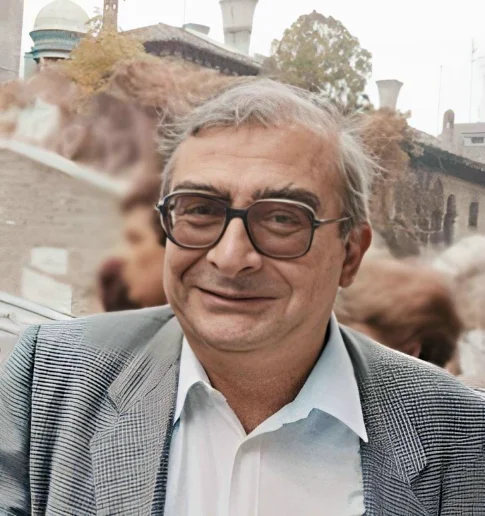
French film director Claude Chabrol died at age 80, ending a prolific career that helped define the French New Wave cinema movement. His psychological thrillers and bourgeois character studies had influenced filmmakers worldwide.
Chabrol’s films explored the dark undercurrents of middle-class French society with wit and psychological insight. His work alongside contemporaries like François Truffaut and Jean-Luc Godard revolutionized international cinema and established new standards for artistic filmmaking.
Holidays and Observances on September 12
Christian Feast Day Observances
September 12 marks multiple Christian feast days, including celebrations of Saint Ailbe of Emly, Guy of Anderlecht, and the Most Holy Name of the Blessed Virgin Mary. These observances reflect the rich liturgical traditions of various Christian denominations.
The feast of the Most Holy Name of the Blessed Virgin Mary holds particular significance in Catholic tradition, honoring the sacred name of Jesus’ mother. Eastern Orthodox churches also maintain their own liturgical calendar for this date, continuing centuries-old spiritual practices.
National Day of Cape Verde
Cape Verde celebrates its National Day on September 12, commemorating the country’s independence and national sovereignty. The holiday brings together Cape Verdeans both at home and in diaspora communities worldwide to celebrate their cultural heritage.
The observance includes traditional music, dance, and cultural exhibitions that showcase Cape Verdean identity and history. Government officials and citizens participate in ceremonies that honor the nation’s journey to independence and its ongoing development.
Defenders Day in Maryland
Maryland observes Defenders Day on September 12, honoring the defenders of Baltimore during the War of 1812. The holiday commemorates the successful defense of Fort McHenry, which inspired Francis Scott Key to write “The Star-Spangled Banner.”
The observance includes historical reenactments, educational programs, and patriotic ceremonies at Fort McHenry National Monument. Maryland residents celebrate their state’s crucial role in defending American independence and inspiring the national anthem.
